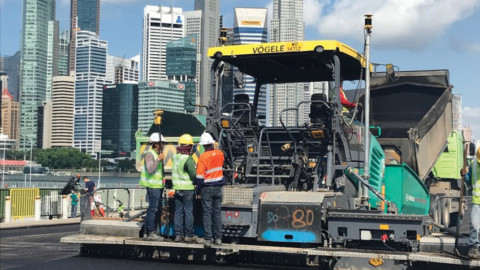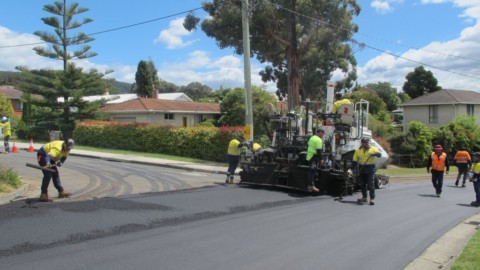by Martin Chow, Senior Economist, HoustonKemp Economists and author of Measuring and Reporting the Value of Road Maintenance and Renewal Works
Governments are under increasing pressure to reduce spending where possible. Road maintenance expenditure is no exception. Without the ability to demonstrate the inherent value of road maintenance, there is a risk that it would become more vulnerable to budget cuts as governments look for ways to fund other services, such as health and aged care.
Although the road network is one of Australia’s most important infrastructure assets, there is general agreement amongst road asset managers that it is not maintained to the required standard. For example, in 2017, the NRMA estimated that the backlog in maintenance expenditure was close to $2 billion on local roads in New South Wales alone.
One of the reasons behind the backlog is that funding requests have not resonated with funding decision-makers. Historically,the case for maintenance funding has been made based on technical or engineering standards. For instance, the road is in poor condition and requires fixing because the level of cracking has exceeded a certain threshold.
However, funding decision-makers have budget constraints and multiple expenditure priorities, and are often focused on the return that can be expected from a certain investment. In other words, does the benefit of an activity outweigh the cost and, if so, by how much? Funding requests based on technical or engineering standards alone makes it difficult for decision-makers to assess whether spending more money on road maintenance is justified or money well spent.
To enable better communication with decision-makers, Austroads has recently published a research report that explores how the benefits of road maintenance expenditure can be quantified. The purpose of the research report is to demonstrate that maintaining the condition of road network can deliver outcomes comparable to investing in capital projects, such as improved safety or travel times, and can offer better ‘bang for buck’.
The research report sets out a cost benefit analysis framework for three common asset functional groups:
- Road surface and related assets
- Bridges and other structures
- Navigation and guidance assets
Understanding the trade-offs of maintenance
The funding decision for road maintenance is not whether there should be such expenditure, but how much investment is appropriate. Too little maintenance expenditure will inevitably lead to poor road user outcomes and risk the asset deteriorating prematurely. On the other hand, too much maintenance leads to concerns about ‘gold plating’ and a perception that the money would have been better spent elsewhere.
The research report helps answer the above question using a cost benefit analysis framework. The framework seeks to create a nexus between maintenance activities and asset condition, and then between asset condition and road user outcomes, such as safety and travel time. In doing so, the connection between maintenance activities and the benefits to road users becomes transparent and quantifiable.
One road condition measure examined in the research paper is the relationship between resurfacing and skid resistance. Resurfacing improves the skid resistance of a road, which improves a driver’s ability to brake, thereby reducing the chance of an accident occurring. A US study suggests that there is a strong, non-linear relationship between skid resistance and the accident rate. In other words, the chance of an accident increases exponentially as skid resistance deteriorates over time. It follows that the decision to resurface can be viewed as the cost of resurfacing weighed against the benefits of reduced road accidents.
Another measure explored in the research paper is the relationship between speed and roughness. Existing literature suggest that road roughness only affects travel speeds in relatively uncongested conditions. The Austroads’ research paper re-examines this relationship using GPS data. The results suggest that road roughness has a stronger effect on speed than previously cited, and that this relationship continues to exist even in peak hours.

National average IRI v speed by for 80km/hr urban roads in peak and off-peak times
The framework is designed to provide a whole-of-life view of road network performance. It focuses on how road user outcomes deteriorate over time when compared to an ‘as new’ asset. The comparison with an ‘as new’ asset allows road managers and funding decision-makers to understand the potential savings from improved conditions in the network, and provides insight into the ‘size of the problem’ over the life of the asset.
It can also be used to determine the timing of maintenance activities. When the road network is in poor condition, then maintenance activities that improve the condition can lead to significant benefits to road users. Similarly, if the road network is in a relatively good condition, then maintenance activities will likely result only in a marginal improvement for road users. This suggests that there will likely be an ‘optimal’ timing to undertake maintenance activities (or that there is a ‘right’ service level) from a cost benefit analysis perspective.
Changing the narrative: shifting from a backlog to an investment opportunity
While the conventional narrative of a maintenance backlog is useful, it often results in a funding request that is higher than what funding decision-makers can afford. It also does not highlight the economic cost associated with not addressing the backlog — what is the economic cost if the maintenance backlog increases from $2 billion to $2.1 billion? Or even $2.5 billion?
The cost benefit analysis framework helps quantify the cost of the maintenance backlog and shows that even incremental increases in maintenance funding can lead to significant economic benefits. The use of cost benefit analysis means that maintenance expenditure can be directly compared with capital expenditure, demonstrating maintenance expenditure is capable of delivering better value for money than previously understood. Put simply, maintenance expenditure can be a great investment.















